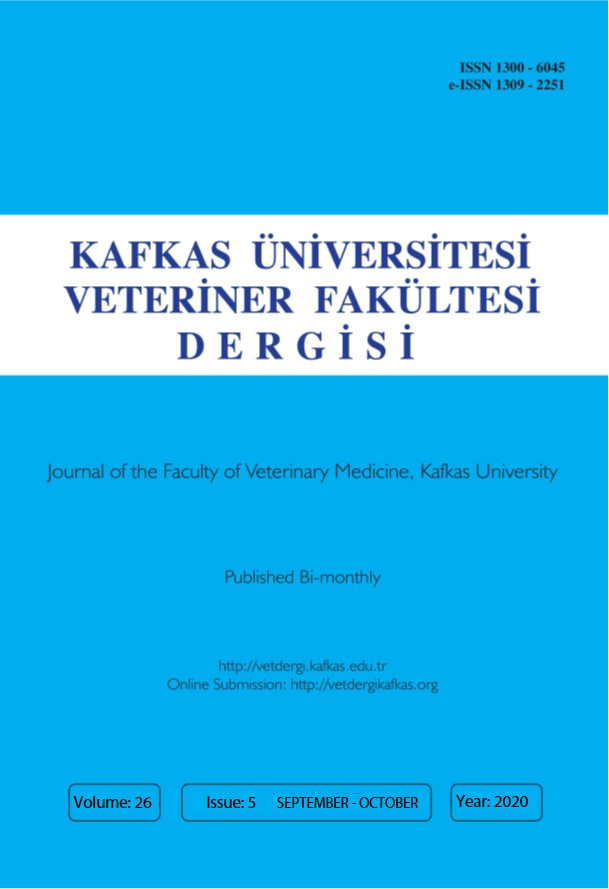
This journal is licensed under a Creative Commons Attribution-NonCommercial 4.0 International License
Kafkas Üniversitesi Veteriner Fakültesi Dergisi
2020 , Vol 26 , Issue 5
The Role of Viral and Parasitic Pathogens Affected By Colony Losses in Turkish Apiaries
1Izmir/Bornova Veterinary Control Institute, Department of Virology, TR- 35030 Izmir - TURKEY2Izmir/Bornova Veterinary Control Institute, Diagnostic Laboratory of Honey Bee Diseases, TR- 35030 Izmir - TURKEY DOI : 10.9775/kvfd.2020.24154 Parasites and viruses are considered major agents of bee colony loss. The aim of this study is to detect the presence of seven viruses and three parasites - namely, Israeli acute bee paralysis virus (IAPV), deformed wing virus (DWV), sacbrood virus (SBV), acute bee paralysis virus (ABPV), black queen cell virus (BQCV), Kashmir bee virus (KBV), chronic bee paralysis virus (CBPV), Nosema, Varroa and Tropilaelaps spp. - in Turkish apiaries affected by colony loss. For this purpose, nine apiaries were examined in 2016, 38 in 2017 and 29 in 2018. The results show that DWV was the most prevalent virus in Turkish apiaries, identified in 44.7% of the samples. The second-most widespread virus was ABPV, in 35.5% of the samples, while the prevalence of BQCV, SBV, CBPV and IAPV was 28.9%, 22.3%, 18.4% and 6.5%, respectively. However, KBV was not identified in any of the apiaries. With regard to microsporidian and parasitological investigations, Nosema was found in 10, Varroa was detected in 21 and both Varroa and Nosema were simultaneously identified in seven apiaries. Tropilaelaps spp. was not detected. In some examples, two, three, four and even five viral agents were detected simultaneously. Mixed viral infections were common in some colonies, which had between two and five different viruses. In conclusion, viruses and mixed infections in particular play a major role in declining colonies. Keywords : Apis mellifera, Bee viruses, Colony losses, Nosemosis, Turkey, Varroasis










